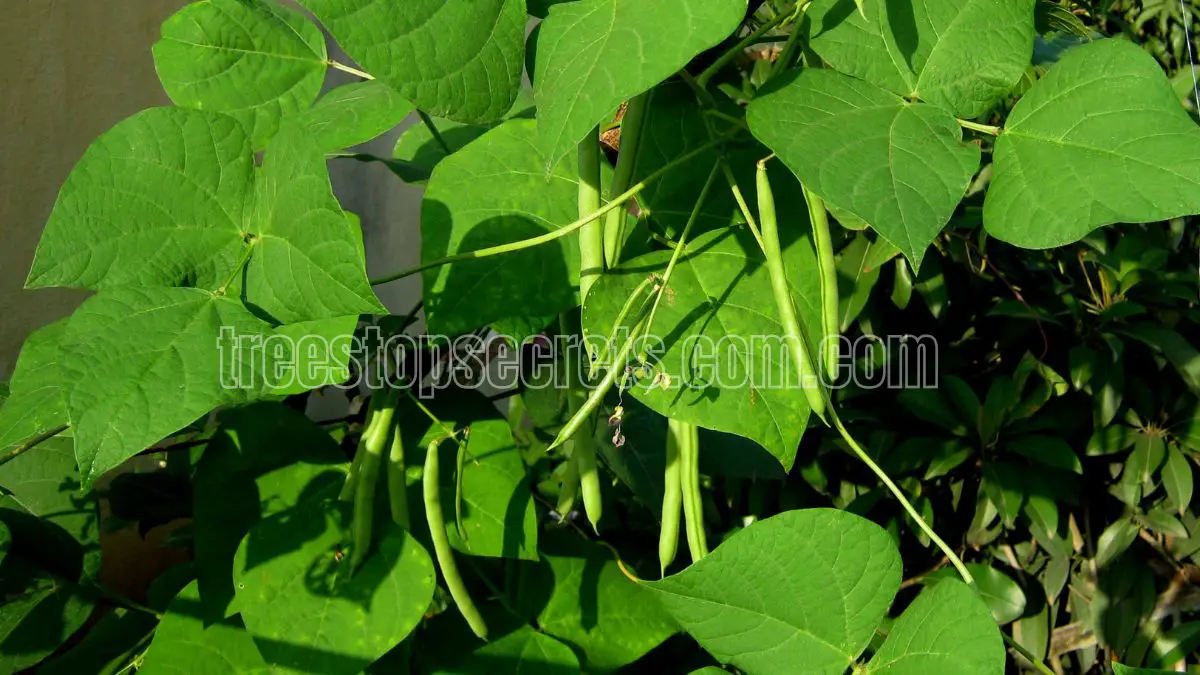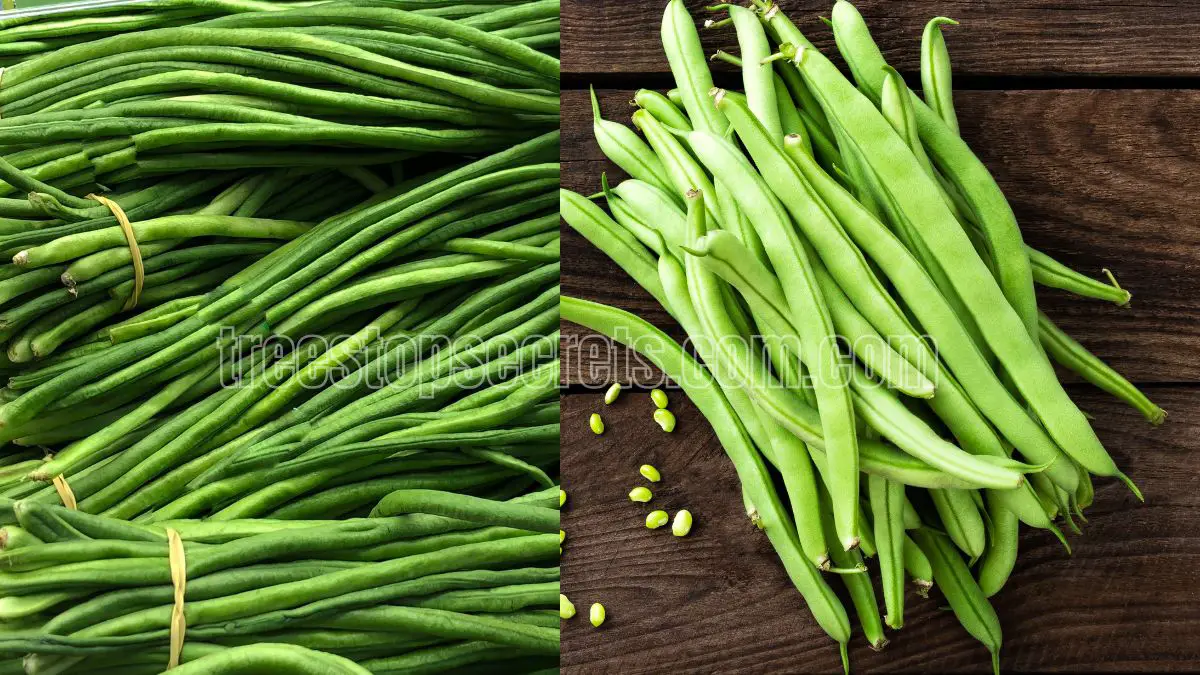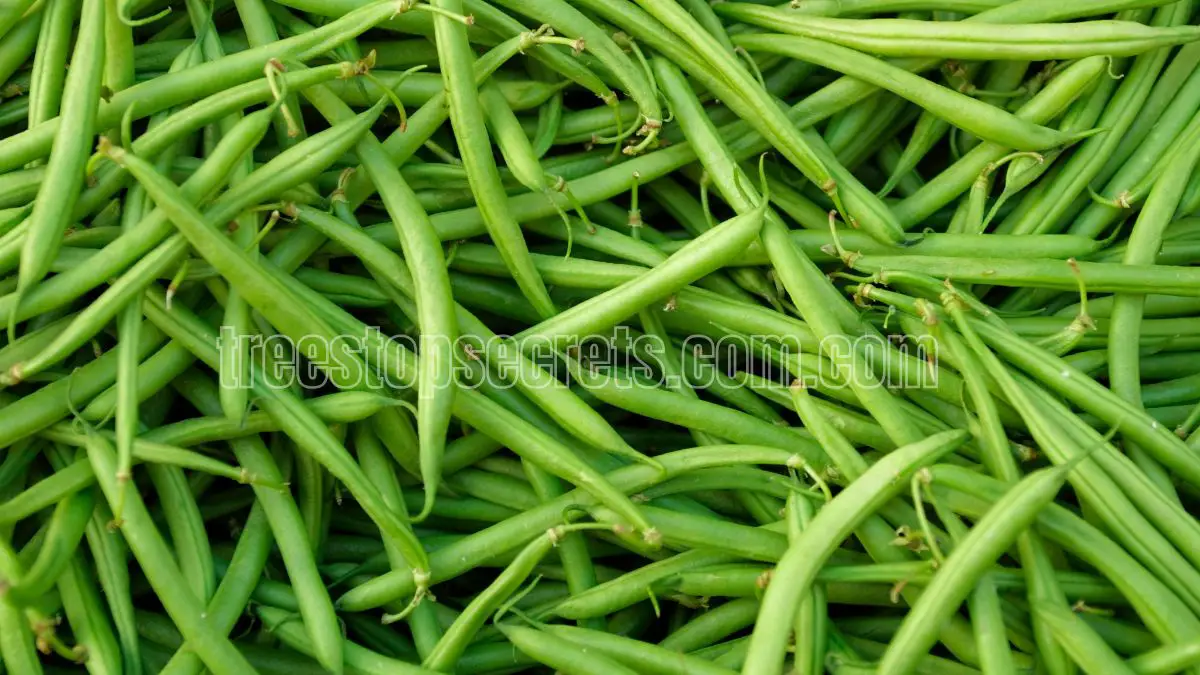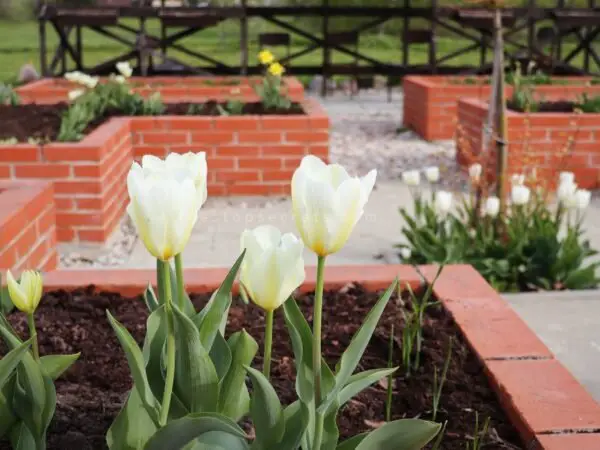Planting and growing green beans is an easy and rewarding process that can lead to tasty results in your home garden.
To start, find a sunny area with well-drained soil, preferably after the last frost when temperatures remain above 60°F.
Plant seeds one inch deep and four to six inches apart. Water consistently, keeping the soil moist and not waterlogged.
As the plants mature, stake or trellis climbing types for support. Pick beans young and tender for the best flavor.
This guide will walk you through each step, offering tips for successful growth and troubleshooting common issues along the way.
Key Takeaways
- Get a soil test to determine pH. A soil pH of 6.0 – 7.0 is ideal, and stir in lots of compost or well-rotted manure to get your green beans growing strong.
- Directly sow the seeds, planting them 1 inch deep and 3-4 inches apart. Space the rows 16-24 inches apart to allow for good air circulation and ease of care.
- Maintain soil moisture at around 1 inch per week while ensuring beans receive full sun for 6-8 hours daily to support vigorous growth.
- Go with bush beans for their smaller, more manageable plants. Choose pole beans if you’re willing to trellis them for more productive plants.
- When you do water, make sure to water deeply – and less frequently. Provide organic fertilizers and watch your pest populations to help your plants thrive!
- Learn how to increase productivity and sustainability in your garden space by trying out companion planting and other creative gardening practices.
How to Plant Green Beans
Planting green beans, such as bush snap beans or pole beans, takes just a few simple steps to get you off to a great start. Amend the soil and select the most suitable planting methods. Learn about their growing conditions and choose the correct bean variety to successfully grow this tasty, nutritious veggie.
1. Prepare Soil for Optimal Growth
Start by testing the soil pH. You want a pH that’s between 6.0 and 7.0, since that’s ideal for cultivating green beans.
Add compost or well-rotted manure to boost soil fertility, increasing nutrient accessibility. Then, rake the soil to remove any remaining debris, leaving a fine seedbed for planting.
It’s important to make sure soil is damp, but not soggy, because proper seed germination relies on the appropriate level of moisture.
2. Choose the Right Planting Technique
Directly seed the beans into the ground 1 inch deep. Space them no closer than 3-4 inches to allow for good airflow.
Plant rows between 16-24 inches apart for easy access when weeding and harvesting. To keep your harvest coming, stagger your planting every 2 weeks.
This will give you a longer harvest period over the season and a more consistent flow of fresh beans.
3. Understand Growing Conditions
Keep an eye on soil moisture, giving your plants around 1 inch of water per week, more on hot days.
Keep air temperatures in the 65-85°F range for best growth. Mulching prevents evaporation and stops weeds from growing.
Plant your beans where they will receive full sun for at least 6 to 8 hours each day, which is essential for strong, healthy plants.
4. Select Between Bush and Pole Varieties
Bush beans reach about 24 inches in height without the need for support. By comparison, pole beans will grow more than 10 feet tall and need a strong trellis to climb.
Bush beans mature faster at 7-8 weeks, while pole beans often take 11-12 weeks. Decide according to how much room you have in your garden and how you want to harvest.
5. Implement Season Extension Techniques
Floating row covers protect your seedlings from late frosts and extend your growing season.
Or, you can seed them indoors under grow lights to give them a head start. Staggered planting and use of mulch can further help create high-quality, continuous harvests from early to late in the growing season.
Care and Maintenance for Green Beans

Care and maintenance are the keys to growing beautiful, healthy snap beans. Water these green bean plants deeply and regularly, and feed them with organic plant foods to keep your plants healthy and vigorous. Additionally, monitor for common bean pests and practice good garden cleanliness to ensure a healthy green bean harvest.
1. Watering Strategies for Healthy Growth
Deep and infrequent watering is very important, promoting a large root system that reaches deep into the soil. Water thoroughly at a rate of 1 inch per week. Allow the top half-inch of soil to dry in-between irrigations.
By using drip irrigation systems, you can save time and resources by watering directly to the root zone area. Overhead watering should be avoided if possible, as this can encourage fungal diseases. Monitor the rainfall and temperature, reducing or increasing your watering frequency as necessary to keep soil consistently moist but not waterlogged.
2. Eco-Friendly Fertilization Approaches
Organic fertilizers such as compost tea or liquid seaweed encourage healthy plant growth by delivering essential nutrients while protecting the beneficial organisms in the soil. For green beans, it’s best to use nitrogen-rich fertilizers with caution, as too much foliage may prevent pod production.
Planting and managing cover crops improves soil health and soil fertility. At the same time, rotating crops from season to season stops nutrient depletion and reduces disease threats.
3. Organic Pest and Disease Management
For example, introducing beneficial insects like ladybugs is an effective way to control aphid populations. Neem oil and insecticidal soap are effective, organic solutions for green bean pests that won’t harm the environment.
Crop rotation helps break pest life cycles, and maintaining proper air circulation around plants can reduce the likelihood of fungal disease.
4. Companion Planting Benefits
Companion planting offers several benefits for green beans. For example, the traditional “Three Sisters” planting technique uses beans with corn and squash to protect, nurture, and create harmony with each other.
Additionally, marigolds are known to repel nematodes, and culinary herbs such as basil are thought to repel harmful insects while improving flavor.
Understanding Green Beans vs. String Beans

Green beans and string beans are often used interchangeably, but they are different in texture and cooking uses. While both belong to the same family, string beans, specifically from the Phaseolus vulgaris plant, often feature a fibrous string along their pod, which some find enhances their tenderness and flavor.
Most people do tend to prefer the flavor of standard green beans, and they’re great in everything from stir-fries to casseroles.
1. Growth Habits of Each Variety
Green beans are usually bush types, doing well in small areas with little support. They have a short maturity time, which makes them a good option for beginner gardeners.
String beans have a more vining growth habit, needing trellises or other supports to hold them up. Though bush types tend to produce less pods, pole types will more than double the harvest in the same amount of space.
2. Culinary Uses and Flavor Profiles
Cooking—especially steaming or short-time sautéing—these beans bring out their nutty, sweet flavor. This combination of traits makes them a scrumptious ingredient in salads, stir-fries, and casseroles.
String beans are a staple of Southern cuisine, often cooked with pork or bacon. Exploring heirloom varieties uncovers new flavors and textures, making for more interesting culinary applications.
3. Regional Growing Tips for Both Varieties
Planting times need to be matched to local climate conditions for best results. Choosing disease-resistant varieties suited to common pest pressures is an important step.
Local community gardens and your local cooperative extension are great resources for specific tips. Tracking patterns in weather will help you take better care of your plants during extremes.
Innovative Practices for Sustainable Cultivation

With urban gardening becoming increasingly popular, using innovative practices can help make growing green snap beans more sustainable. These practices increase the efficiency of space while enhancing the health of the vegetable garden as a whole.
1. Modern Trellising and Support Systems
Building trellises with bamboo poles or wire mesh gives strong support for vining, climbing pole beans. These A-frame or teepee designs can look impressive while beautifying the garden space.
Making sure these structures are strong enough to stand up to wind and support the weight of heavy fruit is key. By placing trellises to maximize sunlight exposure, climbing plants can flourish.
2. Water Conservation Techniques
When implemented farm-wide, rainwater harvesting systems can greatly decrease reliance on municipal water sources. Applying an organic mulch layer helps reduce evaporation, maintaining even moisture levels.
Drip irrigation systems, for example, deliver water directly to the plant’s roots, improving efficiency. By routinely checking soil moisture levels, you can adjust watering practices accordingly and help foster a more robust growth.
3. Addressing Emerging Challenges in Cultivation
Being aware of emerging pest threats and diseases is essential to keeping green bean crops healthy and productive. As climate change continues to change growing seasons across the country, adapting cultivation practices to those changes will be key.
Bean varieties resilient enough to thrive under new or shifting conditions will produce reliable harvests. Building relationships with local agricultural organizations encourages the exchange of information and resources, enhancing the development of sustainable practices.
Conclusion
Planting and growing green beans will provide you with a rewarding experience. Read on for tips on planting, growing, harvesting, and the difference between green beans and string beans. Learn how to adopt more sustainable practices that increase your yield, enhance your environmental stewardship and improve your bottom line. Ensure you monitor soil health, plant watering requirements, and how best to manage common pests. With this very straightforward method, you’ll be on your way to vigorous plants and delicious harvests!
Experiment with varieties to discover which ones are your favorites, and give a few to your friends and family. More than their aggregate value, gardening enhances our lives and helps us connect with the natural world. Get planting with your new green bean garden! Feel the amazing satisfaction of growing your own food, and savor the delicious flavor of homegrown beans at your table. So get out there, get your hands dirty and enjoy the process!
Frequently Asked Questions
How deep should I plant green bean seeds?
Plant green bean seeds, including bush snap beans and pole beans, approximately 1 to 2 inches deep in well-drained soil. This depth will keep the seeds safe but still let them break ground with little issue.
When is the best time to plant green beans?
The ideal time to plant snap beans is late springtime, after the last frost date, ensuring soil temperatures reach a minimum of 60°F for optimal growth of these favorite bean varieties.
How often should I water green beans?
Watering green beans consistently, about 1 inch per week, will ensure your green bean plants thrive by keeping the soil evenly moist without overwatering.
Do green beans need direct sunlight?
Do green snap beans need full sun? If you want a hearty crop of fresh beans, then shoot for at least 6 to 8 hours of full sun per day.
How can I prevent pests on my green beans?
To keep bean plant pests away, use natural repellents like neem oil or release beneficial insects such as ladybugs.
What is the difference between green beans and string beans?
What is the difference between green beans and string beans? String beans are simply a type of green bean, specifically those with a fibrous string running the length of the pod, while many bush snap bean varieties today are developed to be stringless.
How can I support climbing green bean plants?
How can I further support climbing green bean plants in my vegetable garden? This allows for improved airflow and easier harvesting of fresh beans.
Image Source: Paid image from CANVA





